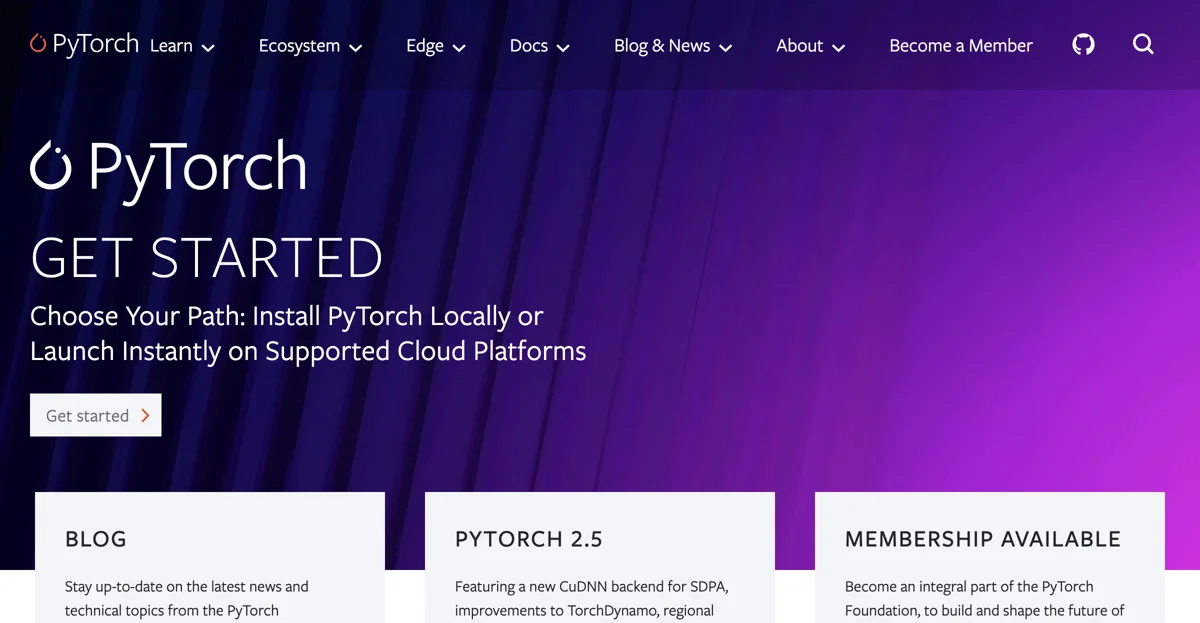PyTorch is a powerful and widely used framework in the field of artificial intelligence. It offers a range of features and capabilities that make it a valuable tool for developers and researchers. One of its key strengths is the seamless transition between eager and graph modes with TorchScript, which simplifies the path to production. The scalable distributed training enabled by the torch.distributed backend is another significant advantage, allowing for performance optimization in both research and production settings. PyTorch also boasts a rich ecosystem of tools and libraries, extending its functionality and supporting development in various domains such as computer vision and NLP. Additionally, its compatibility with major cloud platforms ensures frictionless development and easy scaling. Whether you're working on model interpretability with Captum, deep learning on irregular data with PyTorch Geometric, or seeking full scikit-learn compatibility with skorch, PyTorch provides a comprehensive and flexible environment for AI development.

PyTorch
PyTorch offers seamless transitions, distributed training, and a rich ecosystem for diverse AI applications.

Top Alternatives to PyTorch
Boba
Boba is an AI-powered ideation tool that assists with research and strategy
Wiseone
Wiseone is an AI-powered tool that boosts web search and reading productivity
Project Knowledge Exploration
Project Knowledge Exploration is an AI-powered research platform that offers in-depth exploration
Runway
Runway is an AI-powered creativity tool for various media
Notably
Notably is an AI-powered research platform that boosts efficiency
PaperBrain
PaperBrain is an AI-powered research tool that simplifies access
Unriddle
Unriddle is an AI-powered research tool that saves time and simplifies tasks
Journey AI
Journey AI converts customer research into actionable journey maps
genei
genei is an AI-powered research tool that boosts productivity
Replio
Replio is an AI-powered research platform that streamlines interviews and analytics
Layer
Layer is an AI-powered research tool that saves time
Iris.ai RSpace™
Iris.ai RSpace™ is an AI-powered workspace for smarter research
Fairgen
Fairgen is an AI-powered research tool that offers granular insights
Towards Data Science
Towards Data Science offers diverse AI-related content and insights
NewsDeck
NewsDeck is an AI-powered newsreader that helps users discover, filter, and analyze thousands of articles daily.
Locus
Locus is an AI-powered smart search tool that enhances productivity by quickly finding relevant information on any web page using natural language.
Encord
Encord is an AI-powered data development platform that accelerates data curation and labeling workflows for computer vision and multimodal AI teams.
Seeker
Seeker is a secure, retrieval-augmented generation AI chat platform that provides trustworthy insights from large data sets.
AIModels.fyi
AIModels.fyi is an AI-powered platform that curates and summarizes the latest AI research papers, models, and tools, helping users stay informed about significant AI breakthroughs.
22Analytics
22Analytics is an AI-powered market research platform that helps users validate ideas and analyze competitors efficiently.
Grably
Grably offers instant access to highly-specific, labeled datasets for AI training, enhancing model accuracy with diverse real-world data.